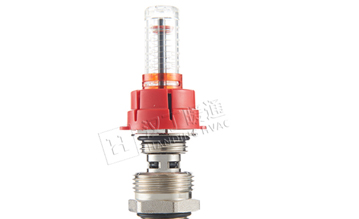 February 07, 2025
February 07, 2025Manifold fittings play a crucial role in fluid - handling systems across various industries, from industrial manufacturing to plumbing in residential buildings. The choice of material for these fittings is of utmost importance as it directly impacts their performance, durability, and suitability for different applications. Here are the characteristics of some common materials used in manifold fittings.

Ⅰ.Metal Materials
⒈Stainless Steel
Corrosion Resistance: Stainless steel is highly resistant to corrosion, making it an ideal choice for applications where the manifold fittings are exposed to moisture, chemicals, or harsh environmental conditions. In marine applications, for example, where the fittings are constantly in contact with saltwater, stainless - steel manifold fittings can withstand the corrosive effects for an extended period without significant degradation.
High Strength and Durability: It offers excellent strength, allowing it to handle high - pressure fluid systems. Stainless - steel fittings can endure the mechanical stress and vibrations present in industrial pipelines, ensuring long - term reliable operation. Their robust nature also means they are less likely to deform or crack under normal operating conditions.
Hygiene and Cleanliness: Stainless steel is easy to clean and maintain, making it suitable for applications in the food and beverage industry, as well as in medical and pharmaceutical settings. Its smooth surface does not harbor bacteria or contaminants, ensuring the purity of the fluids being transported.
⒉Copper Alloy
Good Thermal Conductivity: Copper alloy manifold fittings have excellent thermal conductivity. This property makes them useful in applications where heat transfer is important, such as in heating systems or in some industrial processes that require efficient heat exchange. In a central heating system, for instance, copper - alloy fittings can help transfer heat effectively from the boiler to the radiators.
Malleability and Ease of Installation: Copper is a malleable material, which means it can be easily shaped and bent during installation. This makes it convenient for plumbers and installers to work with, especially in complex piping systems where precise fitting and routing are required.
Natural Antimicrobial Properties: Copper and its alloys have natural antimicrobial properties. In water - distribution systems, this can help reduce the growth of bacteria and other microorganisms in the pipes, contributing to cleaner water supply.
Ⅱ.Plastic Materials
⒈Polyvinyl Chloride (PVC)
Cost - Effectiveness: PVC manifold fittings are relatively inexpensive compared to metal counterparts. This makes them a popular choice for applications where cost is a major factor, such as in some residential plumbing projects or in low - pressure irrigation systems.
Lightweight and Easy to Handle: PVC is lightweight, which simplifies the installation process. It is also easier to cut and assemble, reducing the need for specialized tools and skills. This makes it accessible for DIY enthusiasts and small - scale projects.
Chemical Resistance: PVC has good resistance to many common chemicals, making it suitable for applications involving the transportation of certain chemical solutions. However, its chemical resistance is limited compared to some high - performance plastics, and it may not be suitable for highly corrosive substances.
⒉Polypropylene (PP)
High - Temperature Resistance: PP manifold fittings can withstand higher temperatures compared to PVC. They are often used in applications where the fluid being transported is hot, such as in some industrial hot - water systems or in certain chemical processes with elevated temperatures.
Good Mechanical Strength: Despite being a plastic, polypropylene offers decent mechanical strength. It can handle moderate - pressure fluid systems without significant deformation or failure, making it a reliable option for a range of applications.
Chemical Compatibility: PP has excellent chemical compatibility with a wide variety of substances, including many acids, bases, and organic solvents. This makes it suitable for use in chemical - processing plants and other industries where chemical - resistant fittings are essential.
In conclusion, the choice of material for manifold fittings depends on a variety of factors, including the application requirements, environmental conditions, cost considerations, and the nature of the fluids being transported. By understanding the characteristics of different materials, users can make informed decisions to ensure the optimal performance and longevity of their fluid - handling systems.
GET A QUOTE